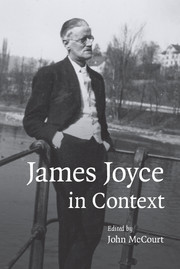1 - Composition and publishing history of the major works: an overview
Published online by Cambridge University Press: 14 July 2009
Summary
James Joyce's publishing career spans nearly forty years, from an essay on Ibsen (1900) to Finnegans Wake (1939). Early on, and like many writers, Joyce established a pattern for the production of his works. He tended to share his manuscripts with colleagues, soliciting advice in placing them. Aided by writers, artists and patrons, he published portions of new work in journals and magazines and, later, in small press editions before issuing a trade edition of a complete work. In fact, all his major and some minor works first appeared, in whole or part, in contemporary periodicals.
Serial publications encouraged Joyce to produce work regularly, paid some royalties and circulated his works alongside his contemporaries’ and to a wide-ranging readership, inviting reviews which usually bolstered interest in an edition. Joyce was actively interested in how readers and critics received his works: he commissioned reviews from colleagues and followed mentions of his works in the press with diligence. He used these – positive and negative – in marketing his next work (and even threaded allusions or responses to some reviews into newer work). Unfortunately, success at one juncture sometimes led to failure at another: as serial publications caught the attention of the censors, they made publication of an edition difficult or impossible.
The works’ composition and publishing histories were also shaped by editors, printers, publishers and other authorities and by Joyce's reaction to the influence they exercised.
- Type
- Chapter
- Information
- James Joyce in Context , pp. 3 - 16Publisher: Cambridge University PressPrint publication year: 2009



